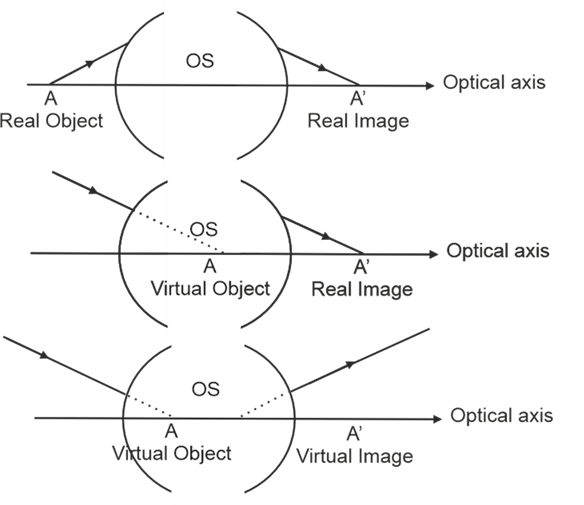Notion of the object, Image and the stigmatism
1- Optical system
An optical system consists of a set of optical instruments such as lenses or mirrors, or more generally, transparent and homogeneous media separated by diopters, with an entrance face (E) and an exit face (F).
An optical system is said to be centered if it has an axis of symmetry called the optical axis, oriented in the direction of the incident light — by convention, from left to right.

2- The stigmatism
A luminous object A sends light rays toward an optical system S. It is assumed that these light rays are refracted (or reflected) through S and arrive at a point A’ or within a small volume centered around A’.

The Rigorous stigmatism
Two points, A (object) and A’ (image), are said to be rigorously conjugate stigmatic points for the optical system S if all rays originating from the object A converge (or diverge) to the same image point A’ after passing through S.
3- Conditions of Gaussian Approximation
- ·A plane object of small dimensions and perpendicular to the principal axis.
- ·Each object point emits only rays at small angles of incidence.
- ·Optical system with a small aperture.
4- Notion of the object and image
An object is real when the light rays actually originate from point A (the point corresponds to a real, physical position).
An object is virtual when the backward extensions of the emerging rays appear to meet at
point A
An image is real if the light rays coming from the optical system actually converge at a point. It can be projected onto a screen.
An image is virtual if the extensions of the emerging rays meet at a point.

Real object space: The space located to the left of the system’s entrance face.
Virtual object space: The space located to the right of the system’s entrance face.

Real Image space: The space located to the right of the system’s exit face.
Virtual Image space: The space located to the left of the system’s exit face.

